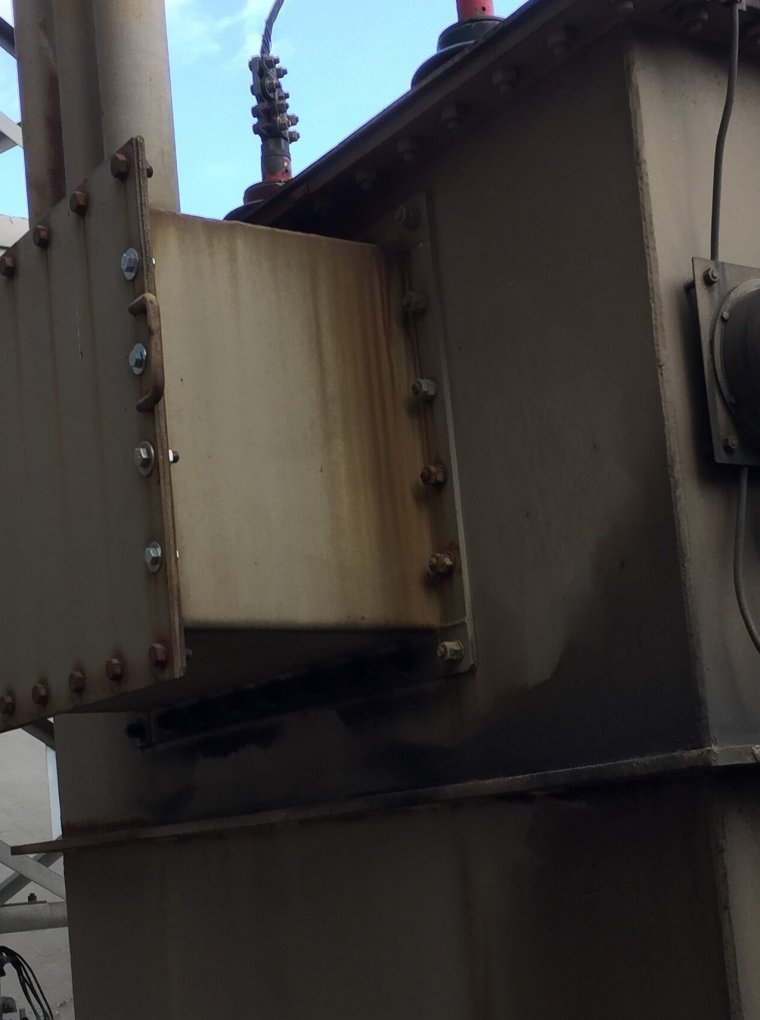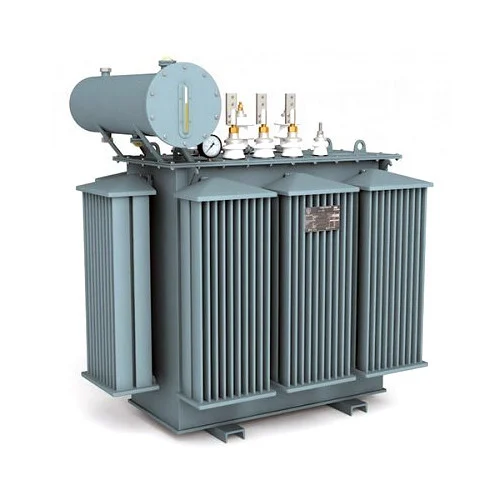Oil management and ancillary supply Specialists

- Home
- Services
Services
NEW TRANSFORMERS (FILLING)
This has now become a major part of our business - Different transformers require different methods of filling. In summary on completion of transformer dressing.
GENERAL REPAIRS AND MAINTENANCE
General repairs and maintenance carried out by our teams are as follows:
PURIFICATION
Oil purification forms an important part of regular preventative maintenance. In the process of purification, water, dirt, and gasses are removed from the Oil using heat and vacuum. This form of treatment is appropriate on "Good to Marginal" quality Transformer Oil that has an acidity value of less than O.INN (mg KOH g of oil). Purification is a PREVENTATIVE maintenance measure for "NON-ACIDIC" oil and should form part of a regular (annual) Preventative Maintenance Programme. The purpose of subjecting nonacidic oil to Purification Treatment is to:
Dielectric Strength: Improvement of dielectric strength (kV)
Water Removal: Contain the accumulation of Moisture to less than 20 (PPM) - over a 12-month period
Gas Removal: Eliminate the accumulation of Dissolved Gases held in suspension in oil. From fully saturated with air (10 to 12% by volume) down to less than 0.1 %.
Particle Removal: Remove impurities in suspension 98% of particles over 0.5 microns.
Non-Acidic Transformer Oil subjected to this form of treatment "Regularly, annually", will be protected from the effects of the normal aging process (oxidisation - chemical changes and imbalances with impurity accumulations). If not carried out periodically the aging process over a period increases Acidity levels which become a threat to the well being of the transformer.
Our Purification equipment is highly efficient and combine high heat, vacuum coalescing filters, and for polishing - 5micron final filtration.
After treatment of oil reflects a Di-electric strength exceeding 60kV (70kV and above for Virgin Oil) and a moisture content of less than 10PPM. Oil in this condition will enable the transformer to perform its function efficiently and allows that moisture levels be monitored and not arise above the mid 20's PPM level.
REGENERATION
When the oil in a transformer reaches a stage (due to ageing) where No Maintenance (purification and degassing) have been carried out. Regeneration is the complete treatment of oil back to a "like new condition". Regeneration addresses the question of Acidity - this is on Transformer oils found to have an Acidity reading more than 0.2NN. Acidic Oil is the "Cancer" which if left unattended and uncorrected attacks the Solid Insulation Materials rendering them brittle and vulnerable to moisture ingress, debilitating the function of the Solid Insulation components.
Deterioration of the Solid Insulation continues apace until ultimately the transformer fails expensively and avoidably!!!!!
Dielectric Strength: Improvement of dielectric strength (kV)
Acid Removal: Equitable to that of Virgin Oil 0.03NN (Once in a 6/7-year Treatment)
Particle Removal: Remove impurities in suspension.
Why is Regeneration necessary?
As oil ages in a transformer, it oxidises and begins to break down. Some of the by-products of this degradation are:
Acids
Aldehydes
Peroxides
These bind together and form sludge. The sludge attacks the chemical bond, which holds the cellulose insulation together (measured by polymerisation).
When the oils neutralisation number is as low as 0.05, the cellulose insulation is already beginning to weaken. Since the cellulose insulation can only be replaced with a rewind, and the resultant loss of production, it makes sense to remove the oxidation by-products before they damage the cellulose. Since any degradation of the cellulose that occurs cannot be reversed, it is best to remove the oxidation by-products on a regular basis.
The life of the transformer is the life of the cellulose insulation.
HYDRAULIC/Industrial OIL PURIFICATION
Why is Purification necessary?
The single greatest enemy of any hydraulic system is the ingress of impurities into the system.
Dirt
Water
Metal particles
In built filtration systems merely reduce the risks whereas purification eliminates them.
How is purification carried out?
Using Regen Oil’s Fluidex IP 600 Plant, the only unit of its kind presently in Zimbabwe.
This operates using heat and vacuum through coalescers. (this removes water, acids and gasses).
The oil is passed through a dual filtration system of 10 micron primary and 5 micron secondary
(this is the recommended spec but can be changed to suit customer needs)
To allow for proper removal of water/moisture the plant must have a water chamber with
consistent flow, this allows for performance that is not in other plants ,i.e. transformer oil plants
(do not be misled, the two typres of plant look the same but definitely are not)
Also on this particular plant is a dual strainer system. Important because each can be isolated and
cleaned independently. This insures the process is continuous (It is preferable to not lose heat,
vacuum etc)
When done offline, post purification, the plant must be run in conjuction with purifier to clear
pipework, pumps, valves etc etc of any impurities lurking within the system.
The plant is the result of years of intensive research and is used in the U.S.A., Europe, and the
Pacific Rim countries.
Results of ISO 11/9 have been achieved with water content of 0%. We normally strive to achieve
17/14 or better with water less than 0.2%
Can purification be carried out on line?
Purification can be carried out On Line; there is no need to shut the plant down.
Purification can also be carried out Off Line; the plant is shut down completely. This allows for
complete drainage of the Oil, opening and cleaning of the Sumps where possible.
When should purification be carried out?
We recommend that your Oil be purified bi-annually, once On Line, and once Off Line.
Should the Oil be tested?
Yes, independent Laboratories can carry this out. Your individual requirements and the operating
environment govern the frequency of testing.
What are the cost savings in purifying the Oil?
Substantial savings can be achieved in the following areas:
Down time: Drastically reduced due to Oil condition monitoring and
maintenance.
System Maintenance: Drastically reduced due to the reduction of wear and friction
on all moving components, i.e. Pumps, Valves and
Cylinders.
Costs: Large savings in System costs can be achieved in the
following areas:
Life span of Hydraulic Oil should be indefinite; carrying out
purification alleviates the necessity to purchase new oil and
costs approximately 30 – 35% the cost of new Oil.
The life span of Pumps, Valves and Cylinders is increased
dramatically.
Proactive Oil Maintenance and Analysis Diagnostics.
• According to the bearings division of TRW – “Contamination is the number one cause
of bearing damage that leads to premature removal”
• Machine Design Magazine reports – “Less than 10% of all rolling element bearings
reach fatigue limit because contamination usually causes wear or spalling failure far
earlier.
• Caterpillar advises – “Dirt and contamination are by far the number one cause of
hydraulic system failures.”
• J. I. Case state that – “One thing holds true about hydraulic systems; the systems must
be kept clean ~ spotlessly clean ~ in order to achieve the productivity they are capable
of.”
• Proactive studies by the U.S. Navy show that the cost of contamination on marine and
aviation equipment per operating hour exceeds 60% of the cost of fuel per hour on the
same equipment.
• M.I.T. report that – “Six to seven percent of the gross national product (US $ 240
billion) is required just to repair damage caused by mechanical wear; wear is the result
of contamination.”
• Oklahoma State University reports – “ When fluid is maintained ten times cleaner,
hydraulic pump life can be extended by fifty times
WET CORE TREATMENT – DRYING: (TREATED OFFLINE)
Transformer oil is HYGROSCOPIC – it thirsts after Moisture and absorbs moisture to the extent that it becomes SUPER SATURATED – eventually the quantity of Moisture will result in precipitation. Transformers have a built in “SPONGE” the cellulose materials which make up 90% of the solid insulants; these materials are by themselves the very nature of their composition – highly absorbent.
Once Transformer Oil – through lack of regular maintenance (purification) because moisture saturated, the Solid Insulation Materials which were submersed in that” WET” oil absorb the excess moisture to the point where they can absorb and hold up to 4.5% of their dry weight in WATER!!! – Moisture is Water and the core is the heart of the transformer – A RECIPE FOR DISASTER!!!

DE-SLUDGE
The De-sludging process can best be regarded as a “TlURD DEGREE – CORRECTIVE MAINTENANCE” measure, reserved for those transformers which have been neglected over a long period of time – never Purified or Regenerated when those services where required or essential commonly called – culpable vandalism.
The De-sludging process is an extension of the Purification and Regeneration treatment carried out at higher temperatures over long periods with the object of returning the quality of the degraded oil to that of BRAND-NEW Transformer Oil and at the same time purging the interior and components of the transformer of sludge accumulations and decay products. The finest solvent for Sludge and decay products is suitably HEATED TRANSFORMER OIL!! By continually passing very hot- clean- dry oil through the through the most badly contaminated Transformer.
This method succeeds where all imitators fail. This treatment can be carried out online. (Dependant on oil condition i.e.: Test Results) Regarding the OIL CHANGE solution the customers pays, of course, for the easy solution, this happens in many ways and costs are always exceeded:
Immediately as new oil is introduced into a transformer requiring De-sludge it becomes contaminated with the sludge remaining in the bottom of the transformer,Core, Radiators, etc. – as it is still contaminated, degradation of the replaced oil occurs within a short space of time as soon as the operating temperature is reached basically as soon as replenishment has taken place.
The purpose of subjecting acidic oil to Regeneration Treatment is to:
- Dielectric Strength: Improvement of dielectric strength (kV)
- Acid Removal: Equitable to that of Virgin Oil 0.03NN (Once in a lifetime Treatment)
- Particle Removal: Remove impurities in suspension.
OFFLINE TREATMENT
A term used when a transformer is isolated and treated due to oil analysis results not within specification.
- Di-electric strength (kV) low
- Moisture (PPM) high above 40PPM
Due to the above conditions the insulation is rated low and will flash during treatment.
WET CORE TREATMENT – DRYING: (TREATED OFFLINE)
A term used when a transformer is energised and treated due to LABORATORY analysis results being within specification.
- Di-electric strength (kV) Normal
- Moisture (PPM) Between 20 and 40PPM
Due to the above conditions the insulation is rated satisfactory.

testing
Regen Oil insists on undertaking all oil sample collections themselves. Sampling is a precise routine governed by laid down practices. Laboratory results are the “launch pad” for all Regen Oil’s treatment recommendations and quotations. It is for this reason that we use independent Laboratories for the testing of Oils, as we feel there would be a conflict of interest if testing were to be carried out in – house. We do however randomly alternate independent laboratories test results as our in house Quality Assurance. All recommended Treatments are as per our recommendation with After Treatment results for record purposes.
Fleet audits are also carried out, enabling engineers and fleet owners to make informed decisions regarding their equipment.
- All results are diagnosed.
- General Condition Monitoring
- Trend Analysis
- Trouble Shooting
- Recommendations and Advice
- Quotations
- Before and After Treatment Result Reports
- All testing is outsourced.
WE RECOMMEND THAT ALL SAMPLING BE CARRIED OUT ANNUALLY
Superior Service
REGEN-HYDRACO Mechanical and hydraulic services specialises in hydraulic repairs and
remanufacturing of all units, as well as supply of new pumps and motors plus accessory parts
and sales.
REGEN-HYDRACO boast more than 100 years of combined mining and hydraulic expertise plus
experience.
REGEN-HYDRACO have a competent field service and support team capable of supporting all sales
and customer on site requirements.
